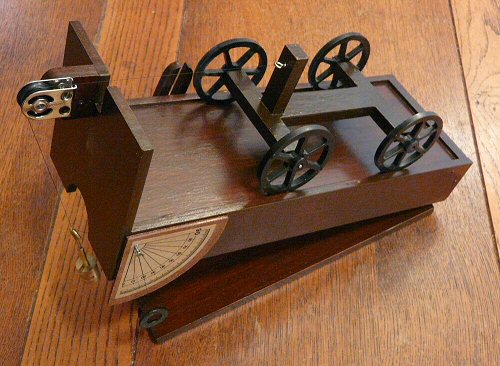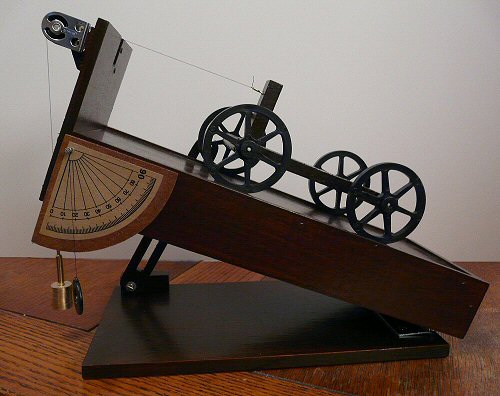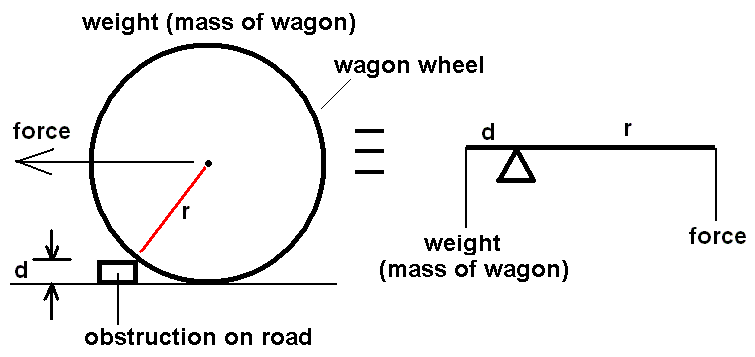

The apparatus can be used to investigate the forces (weights) required to start the wagon moving, to overcome friction and how this varies for example with the angle of the road etc. Towards the top of the inclined plane there is a small obstruction across the road (not shown in pictures) which can be used to investigate friction, the best way to load the waggon and effects of wheel size etc. The axial-to-wheel circumference acts as a sort of lever and so the larger wheels find it easier to overcome obstructions, but of course there is a practical size limit.
In a normal wagon the front two wheels are usually much smaller than the back two wheels. This is because smaller wheels are easier to stear than larger ones. This apparatus can be used to show that the best way of loading such a practical wagon, or cart, is to make sure that the main weight is over the larger wheels rather than the smaller wheels.
If the road is flat the only force required to keep the wagon moving (or to get it moving) is to overcome friction in the axals of the wheels. This is because gravity is acting downward on all parts of the apparatus. We will thus only need a very small weight (attached to the thread over the pully) to make the wagon move. If the angle is increased we need a force to overcome the effect of gravity (which with no weight applied will tend to make the wagon move backward). In the extreme case of a 90 degree road angle the force required will be equal to the weight of the wagon. At smaller angles we will need less weight and of course this depends on the angle. For example at 45 degrees the force is not 45/90 = 1/2 but is more than half of the weight because Sin(45) = 0.707. However because of the complexity of forces and frictions in such simple equipment no two measurements are exactly the same.


THE CREATIVE SCIENCE CENTRE
home | diary | whats on | CSC summary | latest news